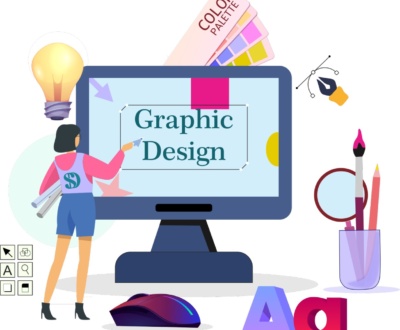There are different types of file formats for images, texts, videos, and so on. Every file format has its own extension. Many of you have not heard about file formats. So, don’t worry, will tell you about different types of file formats. For example, if you save any image, it will be – in jpeg (.jpeg) or in png (.png). We also learn about their uses and file extension.
Now, I’ll tell you about the difference between raster and vector forms.
Raster vs Vector Form
Raster Images are pixel-based graphics which means a series of pixels, or blocks that contain different colors and information to form an image. More pixels in an image, higher resolution, and higher quality of an image. JPEG, PNG, and GIF are raster image file formats.
Vector Images are curve-based graphics which means made up of paths and line art. It is so flexible, when you zoom your image, it will not be pixelated. AI, EPS, and PDF are vector image formats and are best for creating graphics. The logos and business stationery should be in vector form.
List of Different Types of File Formats
1. JPEG
2. PNG
3. GIF
4. PDF
5. PSD
6. SVG
7. EPS
8. AI
9. MP4
Different Types of File Formats
- JPEG (.jpeg) Joint Photographic Expert Group
It is the most common file type used on digital cameras and runs across the web. The popularity of JPEG file is that it is lightweight with good-quality images.
Advantages: Lightweight, viewable on almost any project.
Disadvantages: Loses quality when saved multiple times.
Best uses for Web Images, Email, and PPT.
2. PNG (.png) Portable Network Graphics
It is the high-quality format used for images. The images with a transparent background mean you have an image without a background. You can use it anywhere and with different backgrounds.
Advantages: High-quality images, support transparent backgrounds
Disadvantages: Heavyweight (takes time in loading and lots of storage)
Best uses for Logos, web images, and social networks (profile picture, cover photos)
3. GIF (Graphics Interchange Format)
They are most common in animation form. It is a file format for storing and displaying animated and static images. They are in small sizes and easily shared on the web. GIFs can be created using a variety of software applications, such as Adobe Photoshop, GIMP, and online tools like Giphy and Imgur.
Overall, GIFs are a versatile and engaging way to express emotions, convey messages, and display visual content in a fun and creative way.
4. PDF (Portable Document Format)
It is invented by Adobe. It is a file format used to present documents in a manner independent of application software, hardware, and operating systems. PDF files can include text, images, and other types of data, and are commonly used for documents like manuals, flyers, and reports.
Advantages: it maintains the formatting of a document. This means a PDF document will look the same on a computer, phone, or tablet.
Disadvantages: PDF Reader to be installed on the device to view it.
5. PSD (.psd) (Photoshop Document)
It is a file format commonly used by Adobe Photoshop, a popular image editing software. PSD files can store a wide variety of image data, including raster images, vector graphics, and text. They are commonly used by graphic designers, photographers, and other professionals who need to make detailed changes to images.
Advantages: high level of flexibility and customization when editing images.
6. SVG (.svg) (Scalable Vector Graphics)
It is a file format for creating and displaying vector graphics on the web. SVG files are written in XML (Extensible Markup Language), which is a text-based format for describing data. This means that SVG files can be easily edited and customized using a text editor.
Uses: creating logos, icons, and other simple graphics for use on the web.
7. EPS (.eps) (Encapsulated PostScript)
It is a file format for storing vector graphics. It was originally developed as a standard for printing graphics on high-quality printers, but it has also become a popular format for storing and sharing vector graphics electronically.
Advantages: opened and edited by a wide range of software
8. AI (.ai) (Adobe Illustrator)
It is a popular vector graphics software developed by Adobe Systems. It provides a wide range of tools and features for creating and editing vector graphics, including shapes, text, and gradients. AI is an essential tool for many professionals in the graphics and design industry.
Advantages: Support both files raster & vector graphics in a single document.
Uses: making illustrations and portraits, logos, and other artwork.
Support files: PDF, EPS, SVG.
9. MP4 (.mp4) (Movable Picture Expert Group)
It is a digital video file format that is commonly used for storing and sharing video content. MP4 files are known for their high quality and small file size, which makes them well-suited for use on the web, as well as for storing and sharing video content on devices such as smartphones and tablets.
More from our blog
See all postsRecent Posts
- What is Business Letterhead? January 3, 2023
- Importance of Social Media Design January 2, 2023
- Color Theory January 1, 2023





